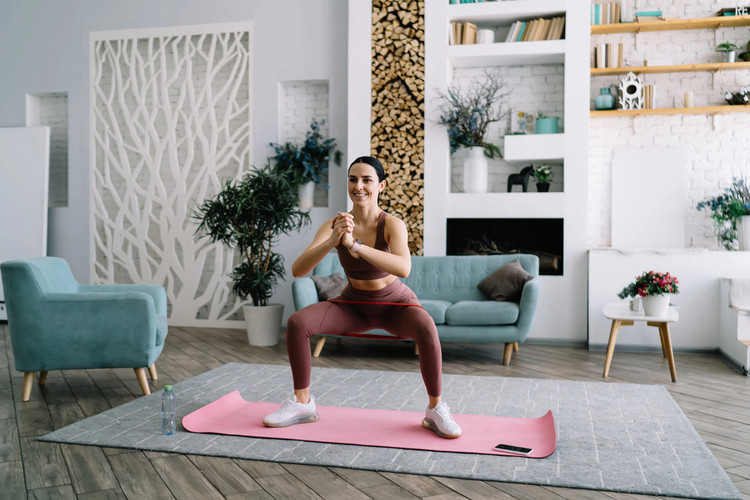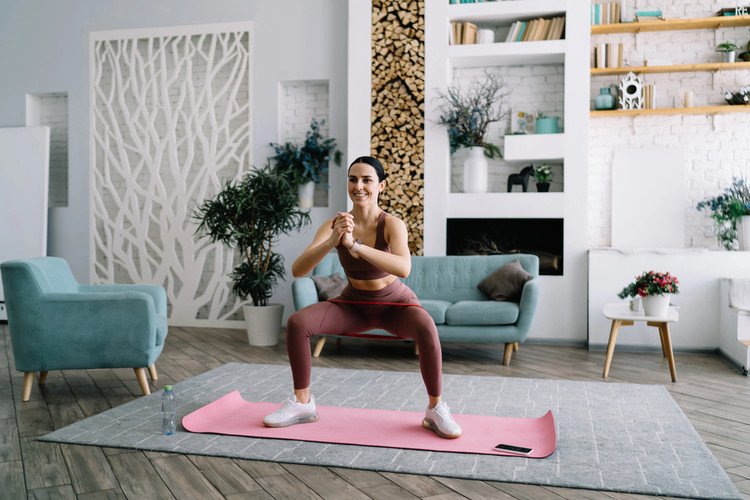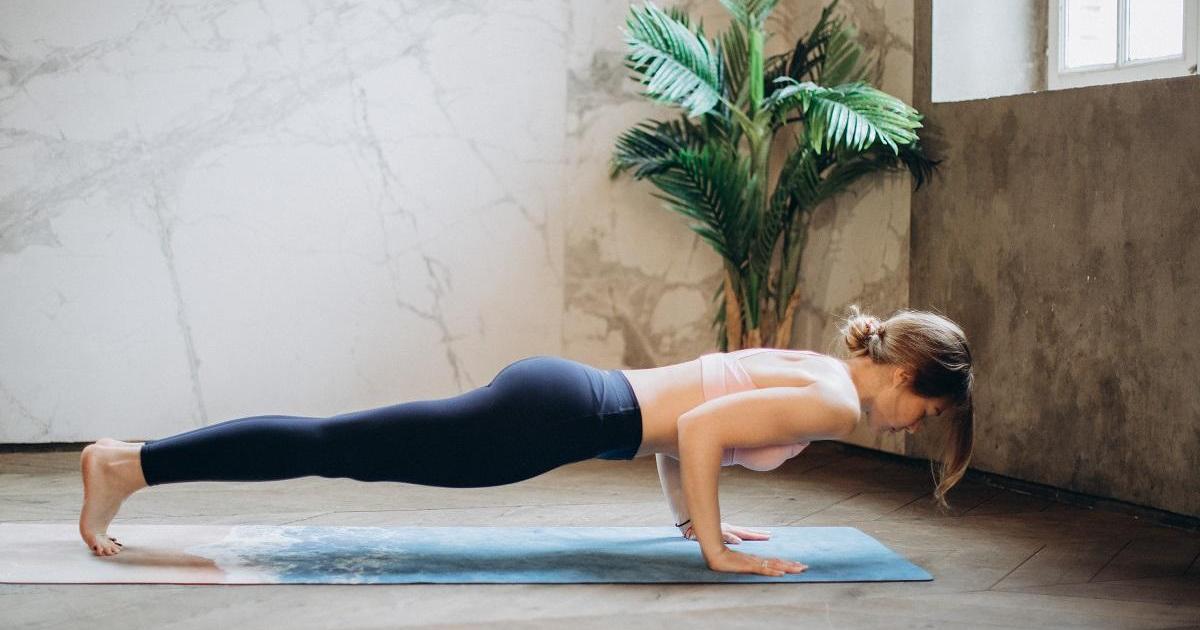No Gym? No Problem! Your Ultimate Guide to Exercising at Home

With busy schedules, rising gym memberships, and the flexibility of working from home, more people are turning to home workouts to stay fit and healthy. The good news? You don’t need fancy equipment or a massive space to get in shape. Your living room, bedroom, or even a corner of your kitchen can become your personal fitness zone.
Whether you’re new to fitness or looking to revamp your routine, this guide will show you how to make home exercise effective, fun, and sustainable.

Why Exercise at Home?
Before we get into the how, let’s talk about the why. Home workouts have several advantages:
-
Convenience: No commute, no waiting for machines, and no need to pack a gym bag.
-
Cost-effective: No gym membership fees, expensive gear, or fuel costs.
-
Privacy: You can exercise in peace—sweat, stumble, or dance without worrying who’s watching.
-
Flexibility: Work out on your schedule, whether it’s early morning or late at night.
-
Consistency: With no travel time or weather concerns, it’s easier to stay on track.
The key to success with home workouts is creating a routine that fits your goals, lifestyle, and preferences.
Setting Up Your Home Workout Space
You don’t need a full-fledged gym setup, but having a dedicated space makes a big difference. Here’s how to create your fitness corner:
-
Clear the clutter: Make enough room to move freely—especially for exercises that involve jumping, stretching, or lying down.
-
Use a mat: A yoga or exercise mat protects your joints and floor, and defines your workout area.
-
Good lighting and ventilation: Open a window or turn on a fan to keep air fresh.
-
Keep essentials handy: Resistance bands, dumbbells, a jump rope, or even a water bottle can go a long way.
-
Optional tech: A phone stand or screen for following workout videos, and a speaker for music or guided audio.
No Equipment? No Problem.
Bodyweight workouts are incredibly effective and require zero equipment. Here are some powerful exercises you can do anywhere:
-
Squats: Great for legs, glutes, and core.
-
Push-ups: Builds upper body and core strength. Modify with knees if needed.
-
Lunges: Targets legs and improves balance.
-
Planks: Strengthens the core and improves posture.
-
Burpees: A full-body move that boosts cardio.
-
Mountain climbers: Good for cardio and core.
-
Jumping jacks: A simple way to get your heart rate up.
Tip: Combine 4–6 of these into a circuit (e.g., 30 seconds on, 15 seconds rest) for a quick and sweaty 20-minute workout.

Sample Weekly Home Workout Plan (No Equipment)
Monday – Full Body Strength
-
Bodyweight squats – 3 sets of 15
-
Push-ups – 3 sets of 10–15
-
Planks – 3 sets of 30 seconds
Tuesday – Cardio & Core
-
Jumping jacks – 1 min
-
Mountain climbers – 3 sets of 30 seconds
-
Sit-ups – 3 sets of 15
Wednesday – Active Recovery
-
30-minute walk or gentle yoga/stretching
Thursday – Lower Body Focus
-
Walking lunges – 3 sets per leg
-
Glute bridges – 3 sets of 20
-
Calf raises – 3 sets of 15
Friday – HIIT (High-Intensity Interval Training)
-
30 sec work / 15 sec rest x 4 rounds:
-
Burpees
-
Jump squats
-
Push-ups
-
Plank holds
-
Saturday – Flexibility & Mobility
-
20-30 mins yoga or dynamic stretching
Sunday – Rest or light walk
Adding Equipment as You Go
As you progress, consider adding a few affordable tools to increase variety:
-
Resistance bands: Great for strength training and mobility work.
-
Dumbbells or kettlebells: For weighted exercises.
-
Jump rope: A fun way to improve cardiovascular fitness.
-
Stability ball: For core work and stretching.
-
Foam roller: A must-have for recovery and muscle tension release.
Staying Motivated at Home
Let’s be honest—home workouts can be hard to stick with. There’s always a distraction: the couch, your phone, that pile of laundry. But with a few smart strategies, you can stay committed:
-
Set a schedule: Treat your workout like a meeting. Put it in your calendar.
-
Dress for it: Changing into workout clothes triggers your brain that it’s time to move.
-
Keep it short: Even 15–20 minutes is enough. Consistency matters more than duration.
-
Follow a program: Use YouTube, apps, or printed plans to stay on track.
-
Track progress: Mark your workouts on a calendar, use a journal, or take photos every month.
-
Reward yourself: After a good week of workouts, treat yourself to something nice—healthy or otherwise.
Best Free Resources for Home Workouts
There are tons of free, high-quality workouts online. Some top picks:
-
YouTube Channels:
-
FitnessBlender: For all fitness levels.
-
Yoga with Adriene: Excellent for beginners and flexibility.
-
Pamela Reif or Chloe Ting: Great structured workout programs.
-
-
Apps:
-
Nike Training Club – Offers strength, yoga, HIIT, and more.
-
7 Minute Workout – Quick routines for busy days.
-
FitOn – Free guided workouts with celebrity trainers.
-
These resources make it easy to mix up your workouts and avoid boredom.
Benefits of Exercising at Home
Beyond convenience, working out at home offers these amazing perks:
-
Reduces stress: Regular movement is a powerful way to manage anxiety and boost mood.
-
Improves focus: Exercise sharpens mental clarity and supports better productivity.
-
Supports better sleep: Physical activity helps regulate your sleep cycle.
-
Builds discipline: Committing to regular exercise builds self-motivation and resilience.
-
Saves time and money: No travel or gym fees means more time and cash for other priorities.
